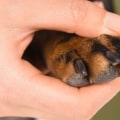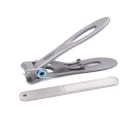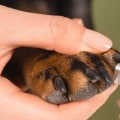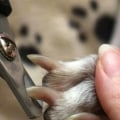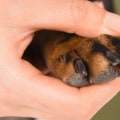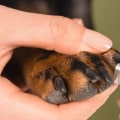Long claws are more likely to splinter, tear, split and break, which can be very painful and require veterinary treatment. In addition to being prone to damage, when a dog stands or walks on a leg with long claws, it puts pressure on the wrong parts of the foot, causing pain and discomfort. Trimming your dog's nails is more than just a cosmetic task. Veterinarians warn that sick nails can cause pain and, on rare occasions, cause irreversible damage to dogs.
Nails that are too big cause accidents: dogs use their nails for traction and balance when walking or running. Nails that are too long can make it easier for a dog to slip and fall. Long nails cause the dog to position its feet differently, in a “plantigrade” position. In other words, the nails “push” the dog's fingers up and the “heel” goes down to maintain balance, putting pressure on the muscles and ligaments of the legs.
Older dogs with arthritis find these changes to be particularly uncomfortable. As explained by the American Kennel Club (AKC), dog nails that are too big can cause discomfort and health problems. When your fingernails are long enough to touch and touch the floor, they can cause your toes to spread apart and put uncomfortable pressure on the structure of your feet and legs. For many people, trimming their dogs' nails can be one of the most challenging aspects of owning a dog.
Creating the right environment involves developing confidence in the ability to cut your dog's nails correctly (remember that dogs will notice when you're nervous) and knowing what essential elements are needed to make it a good experience. And be sure to give your dog lots of praise and rewards so they can continue to create a positive association with nail trimming. Repeat this for several sessions for a few days until your dog is happy to see the nail cutting tools come out. Trimming your dog's nails frequently will cause them to be removed quickly and will allow the nails to be cut shorter.
If your dog hates having his nails cut, the first step is to overcome his fear of the tools needed to cut his nails. The nail and nail grow more or less at that angle, and if you keep it you can trim the shortest nail. In addition, the repeated impact of the nail on the nail bed with each step can cause sufficient trauma to the dog's foot to cause the dog's legs to be extended or flat. If the angle of the nail is cut incorrectly or there is too much tip left, it should be rounded off with a Dremel or nail file.
You can't just cut a dog's nail that's too big because in the center of the nail is a group of nerves and blood vessels called “fast”. If dogs' nails are dark in color, it can be difficult to judge how short they should be cut before hitting the “fast” blood vessel on each nail.
